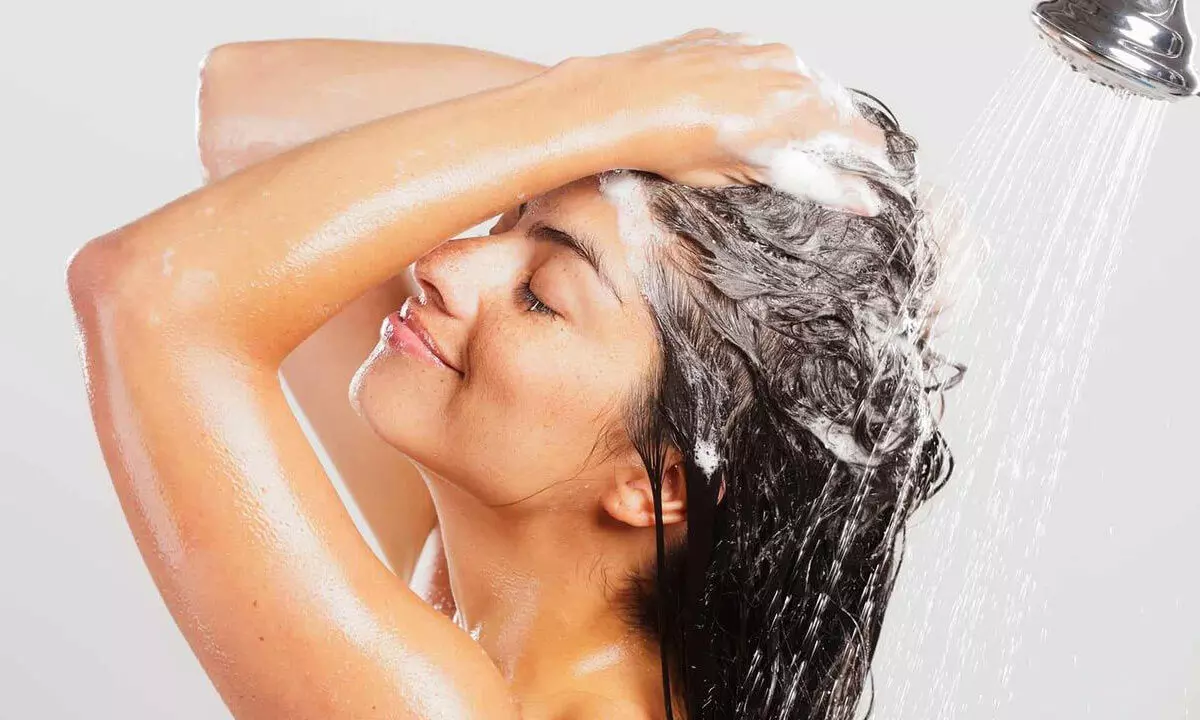Maintaining your scalp health

Maintaining a healthy scalp is crucial for achieving vibrant and beautiful hair. Explore tips and insights from Rob Smith, Senior Principal Hair Care Scientist at Dyson, to enhance your hair's overall health and appearance
We spend plenty of time and money on our skin and hair, yet our scalp is often overlooked. The scalp has approximately 100,000 hair follicles and sebaceous glands and keeping it healthy plays an important role in helping hair strands look and feel their best.
Rob Smith, Senior Principal Hair Care Scientist, Dyson answers some crucial questions about maintaining a healthy scalp and how it contributes to overall hair health.
What role does our scalp play in healthy hair?
Over the past decade, numerous studies have underscored the connection between a healthy scalp and the quality of hair. An imbalance in the scalp's health can lead to issues like dandruff or impaired hair growth. It becomes evident through factors such as reduced hair diameter or a lesser smooth hair surface. The scalp tissue comprises different layers, with the outermost layer "stratum corneum," serving as a barrier for maintaining scalp health. When intact, it protects the skin from dehydration, external toxins, bacterial infestation, or disruption in keratin production. In the event of damage to the outermost layer—specifically, if the lipids binding the skin cells are compromised—moisture loss can occur. This results in a dry, porous skin layer that may contribute to issues such as dandruff, irritation, rough hair surface, diminished shine, hair loss, and potential development of diseases like psoriasis or seborrheic dermatitis. Our hormones, nutrition, UV damage, air pollution, and natural ageing processes may also affect the condition of our scalp health.
Notably, women’s scalp tissue is approximately twenty percent thicker than that of men. Individuals experiencing hair loss usually have thinner scalp tissue. When we develop hair styling products, we need to make sure that our tools are designed in such a way that they do not negatively affect the health of our scalp.
How often should I wash my hair to keep my scalp clean?
The million-dollar question. When we wash our hair, we remove the sebum. However, in small amounts, sebum is important for our hair and scalp because it supports the skin barrier and keeps the skin hydrated. If you wash your hair too often, you strip it of this natural moisturiser. However, if you have too much sebum, you will struggle with microbial problems. Hence there is no set rule. You have to find a healthy balance yourself. Washing your hair frequently can cause just as many problems as not washing it often enough. But if you have dandruff or a dry, itchy scalp, it can be a good idea to wash your hair more often to remove the sebum that some microbes feed on.
How to protect your scalp from damage?
• Steer clear of heat: When using a hairstyling tool, avoid using them too close to your scalp as it could damage the skin tissues. You can also opt for hair tools with heat control such as the Dyson hair care range which provides no extreme heat damage to your scalp and hair.
• Say no to very tight hairstyles: Hairstyles such as tight ponytails or extensions can exert excessive tension on hair follicles and potentially lead to hair loss. Hence, opt for loose or open hairstyles.
• Keep your scalp clean: It's essential to uphold scalp cleanliness, given that sebum serves as a microbial food source. These microbes convert sebum into a substance that irritates the scalp, resulting in dandruff.
• Sun protection is paramount: Long hair offers a certain level of shielding, as the melanin in the hair transforms UV radiation into heat. However, for individuals with short hair ensuring scalp protection becomes a slightly more challenging task.










